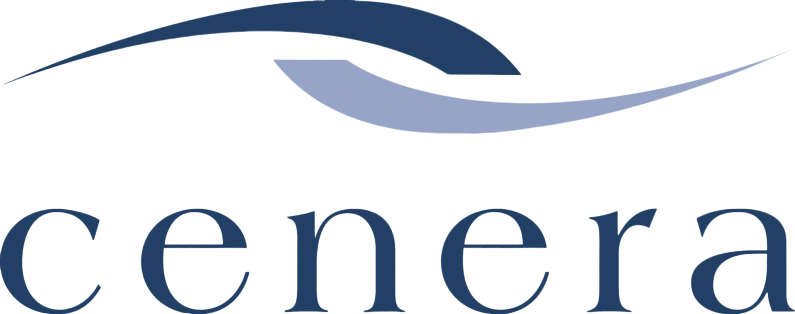Workplace Bullying: Causes, Effects and Prevention
Workplace Bullying: Causes, Effects and Prevention
Recent insights from Statistics Canada uncover just how widespread and problematic workplace bullying has become within Canadian workplaces. The results, based on StatsCan’s General Social Survey, revealed that 19% of Canadian women and 13% of men reported being harassed in the workplace, with verbal abuse being the most common form of harassment.
As part of the 6th Annual Workplace Bullying Awareness Week, Cenera is committed to showing up, breaking the silence, building awareness, and supporting employers and HR managers in creating positive changes that help ensure their workplaces are safe for everyone.
In this article, we explore the definition of workplace bullying, why it occurs, how it impacts individuals and workplaces, and finally, what employers can do to help prevent it from happening in the first place.
What is workplace bullying?
The Canadian Centre for Occupational Health and Safety defines workplace bullying as “acts or verbal comments that could ‘mentally’ hurt or isolate a person in the workplace. Sometimes, bullying can involve negative physical contact as well. Bullying usually involves repeated incidents or a pattern of behaviour that is intended to intimidate, offend, degrade or humiliate a particular person or group of people. It has also been described as the assertion of power through aggression.”
Bullying behaviour can include:
Unwelcomed conduct, comments or gestures that cause humiliation
Aggressive communication or body language: yelling, cursing, first shaking, angry emails
Intentional exclusion
Intimidation: standing too closely, making inappropriate gestures or comments, taunting
Deliberately setting an individual up to fail: making unreasonable demands, setting impossible deadlines, interfering or sabotaging work
Intentionally withholding information or resources
Manipulation
Cyberbullying: posting or sending offensive or intimidating messages over social media, email, instant messenger, etc.
Why does workplace bullying occur?
Bullying can occur for several reasons, but is often the result of a combination of personality factors and work-related stressors, including but not limited to:
Job insecurity
Workload
Role conflict/ambiguity
Cognitive demands of the job
Negative emotional states
Aggressive or hostile behaviours
How does workplace bullying affect individuals?
There’s no right, wrong, or predictable response to being victimized by a bully. Reactions can and will vary from person to person, but the one thing we know for sure is that the negative experiences for people who are bullied are vast, and can cause physical, social, emotional, and mental health issues. Victims may experience shock, anger, fear, frustration, helplessness, or shame. Plus, beyond emotional distress, new research has found that bullying can also have severe consequences on an individual’s health, due to loss of sleep, changes in eating habits, and symptoms of stress, panic and anxiety.
How does bullying affect the workplace?
Having a bully lurking among your staff can have a big impact on productivity, absenteeism, employee turnover and morale. Not only are bullied workers unable to perform their jobs to the best of their abilities, but mistreatment can also be particularly damaging to your workplace culture and reputation. Employers have a duty to prevent harassment and bullying, and failing to do so can result in incidents, harm and legal action.
What can employers do to prevent workplace bullying?
Start by developing a policy that inhibits harassment and bullying and responds to behaviours that are offensive or harmful to others.
Your policy should include:
Appropriate code of conduct
A definition of harassment and bullying
Reference to applicable law and standards
Consequences for violation
Management’s responsibilities to respond in a timely and appropriate manner to observations and/or reports of objectionable behaviour
Employees’ responsibilities to recognize and report incidents and behaviours
Reporting mechanisms
Provision of supports for all parties involved, such as extended family benefits
A transparent conflict resolution process for complaints managed informally
Designation of those who will investigate complaints and criteria for complaints to be referred to an external investigator
Consequences for frivolous complaints made with malicious intent
Strict confidentiality requirements around all aspects of complaints and investigations
Next, develop processes and procedures, such as:
Complaint mechanisms
Investigation processes
Appointment of a contact person for inquiries
Finally, provide training that embeds bullying and harassment prevention into your workplace culture and leadership development program. Cenera’s Respectful Workplace Training course can help you foster an environment where people feel safe and can thrive.
Our training covers…
What is respectful behaviour?
Defining harassment, including discrimination, sexual harassment and bullying.
Identifying, stopping and preventing harassing behaviours.
Understanding the obligations of employees and employers.
Knowing what to do if you are harassed or accused of harassment.
Insight into how to build respectful and inclusive workplaces.
Cenera’s team of HR Professionals and Workplace Investigators are experts in preventing and navigating sensitive workplace issues, investigating complaints, and delivering workplace bullying and prevention training for employees and managers. For more information or support, call 403.290.0466.
Let’s Connect
Never miss an update, click here to subscribe to our monthly newsletter.
Plus, follow us on LinkedIn!
Share This Story, and Choose Your Platform!

